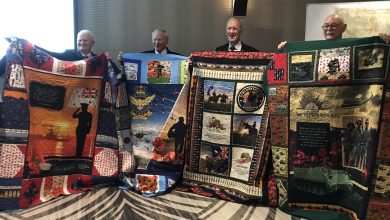Were Your Grandparents Or Great Grandparents Deltiologists?
Memories With Ivor Jones & Friends
When people went on holiday during times past what did they do? Today, many people display holiday snaps on internet sites such as Facebook, Instagram or messenger with words telling the reader what a great time was being enjoyed. Back in the 1870s up to recent times postcards were a popular method of sending short messages and photos of holiday spots.
Post cards were first issued by Government Postal Services throughout Europe and the US in the 1870s but within twenty years, private printers had started producing pre-printed postcards displaying illustrations on one side with space on the other side for a short message and the writing of a name and address to whom the card was to be delivered to.
Between 1901 and 1907 postcard production doubled every six months. People called this “postal carditis” or “postcard mania”. This was caused by at least three factors – Technological change meant that postcards could be mass-produced cheaply with high-quality colour images, a more efficient postal service meant that they were cheap to send, and, better public transport with the evolution of more transport services such as rail and the introduction of motor buses meant that people were able to travel more widely and regularly. A trip to the “seaside” became much more common for the common folk of yesteryear.
In Australia there were some notable postcard companies which included Kerry & Co in Sydney started by Charles Kerry which ran from 1890 to 1917, although Charles Kerry left the company in 1913. Another major postcard company was the Rose Stereograph Company situated in Victoria which was created by George Rose from Clunes in 1880 which produced firstly photographic stereographs which need to be viewed through a hand-held Stereograph Viewer which were very popular at the time.
After WW1 stereographs became less popular and George Rose changed to producing postcards instead, mainly featuring views of Victorian towns and cities. These two companies were the leading postcard companies in Australia during the early Twentieth Century. Many other local companies were also established by photographers in other states. John Sands Ltd was also a large postcard printer during the same time. World fairs, expos and exhibitions were a common feature of the early 1900s and adventure amusement arcades and parks were also being established around industrialised countries. This also gave reasons for the general public to attend and send postcards to family or friends back home. Advertisers such as hotels, department stores, shipping companies and other commercial operators also saw the potential of reaching potential customers by way of issuing post cards for their guests, passengers or customers to send to their friends and family thus becoming perhaps an early form of “spam”. On one day in 1906 according to the US Post Office 200,000 postcards were sent from Coney Island in New York alone.
Post card collecting (or deltiology – from the Greek deltion, ‘little writing tablet’ became the number one hobby or pastime during the early 1900s.
Like email and the Internet, postcards also had their critics. US satirist, John Walker Harrington wrote in the “American Magazine” during March 1906 in regard to the increasing use of postcards “Unless such manifestations are checked, millions of persons will become victims of the faddy degeneration of the brain”.
The popularity of postcards started to decline when the telephone started to make its way into households more and more. The advent of the internet, mobile telephones, email and messaging services have all added to the decline. of deltiology or Postcard collecting. It has also led to the reduction of post boxes and postal services generally and the use of facsimile machines and services.










